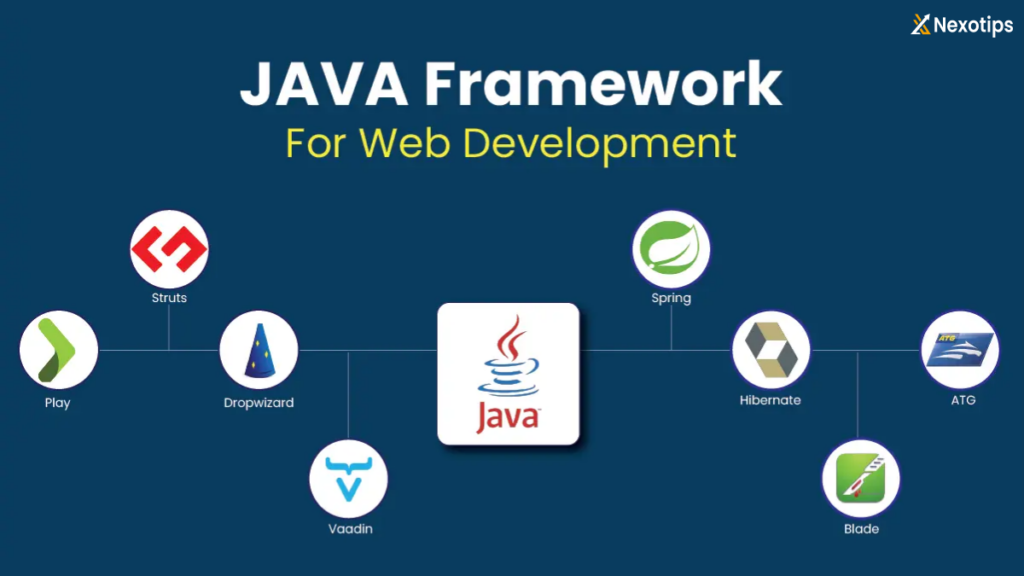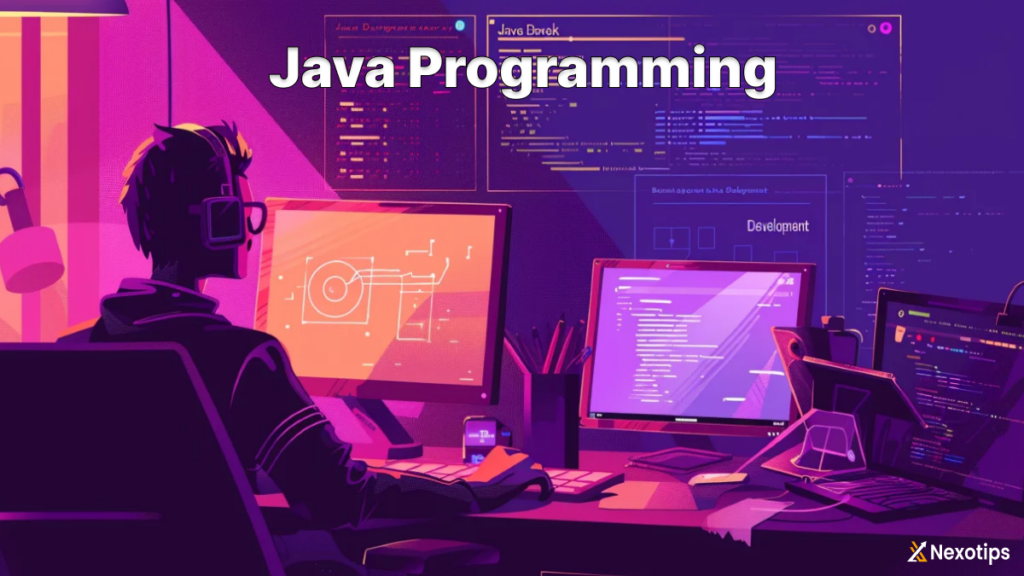
Mastering Java Programming : A Comprehensive Guide for Modern Developers 2024
Contents :
Java Programming, a programming language that is known for its robustness, versatility, and widespread usage, has proven its longevity since it was first introduced in the mid-1990s.
Created by Sun Microsystems (now owned by Oracle Corporation), it “write once, run anywhere” capability has made it a favorite among developers for building cross-platform applications. This blog will provide an in-depth overview, explore its key features, and demonstrate its applications through practical examples.
Overview of Java Programming
Java Programming is an object-oriented, class-based programming language designed to have as few implementation dependencies as possible. This makes it a popular choice for developers looking to build platform-independent applications. The Development Kit (JDK) includes the Runtime Environment (JRE) and a collection of tools to compile, debug, and execute it’s applications.
Java Programming’s syntax is similar to C and C++, but it introduces concepts like automatic memory management (garbage collection) and a strong emphasis on object-oriented principles. These features make it not only powerful but also relatively easy to learn and use.
Key Features
- Platform Independence: Java Programming can run on any device equipped with the JVM, ensuring cross-platform compatibility.
- Object-Oriented: it is designed around the concepts of objects and classes, promoting reusable and modular code.
- Robust and Secure: Java Programming includes extensive error-checking mechanisms, garbage collection, and runtime exception handling, which contribute to its robustness and security.
- Multithreading: Java Programming supports multithreading, allowing concurrent execution of two or more threads for maximum CPU utilization.
- Rich API: Java Programming’s extensive standard library provides a wide range of utilities for networking, data structures, GUI development, and more.
- Community Support: Java Programming has a large, active community and a wealth of resources, libraries, and frameworks, making it easier to find support and extend its capabilities.
Installing
To start developing in Java Programming, you need to install it for Development Kit (JDK) on your system. You can access the JDK by downloading it from the Oracle website. Follow the installation instructions for your operating system.
// Verify installation
public class HelloWorld {
public static void main(String[] args) {
System.out.println("Hello, World!");
}
}
Basics
Let’s explore some basic Java Programming concepts and examples.
Variables and Data Types
Java Programming supports various data types including integers, floats, strings, and booleans. It is imperative to declare variables with a designated data type.
// Variable declaration
int x = 10; // Integer
double y = 3.14; // Double
String name = "Alice"; // String
boolean isStudent = true; // Boolean
System.out.println(x);
System.out.println(y);
System.out.println(name);
System.out.println(isStudent);
Control Structures
Java Programming provides standard control structures such as if-else statements, for loops, and while loops.
// If-else statement
int age = 20;
if (age >= 18) {
System.out.println("You are an adult.");
} else {
System.out.println("You are a minor.");
}
// For loop
for (int i = 0; i < 5; i++) {
System.out.println(i);
}
// While loop
int count = 0;
while (count < 5) {
System.out.println(count);
count++;
}
Functions (Methods)
Methods in Java Programming are defined within classes and are used to perform specific actions.
// Method definition
public class Main {
public static void main(String[] args) {
System.out.println(greet("Alice"));
}
public static String greet(String name) {
return "Hello, " + name + "!";
}
}
Arrays and Collections
Java Programming provides powerful data structures such as arrays and collections (ArrayList, HashMap, etc.).
// Array example
int[] numbers = {1, 2, 3, 4, 5};
for (int number : numbers) {
System.out.println(number);
}
// ArrayList example
import java.util.ArrayList;
ArrayList<String> fruits = new ArrayList<>();
fruits.add("Apple");
fruits.add("Banana");
fruits.add("Cherry");
for (String fruit : fruits) {
System.out.println(fruit);
}
// HashMap example
import java.util.HashMap;
HashMap<String, Integer> ages = new HashMap<>();
ages.put("Alice", 25);
ages.put("Bob", 30);
System.out.println(ages.get("Alice"));
Advanced Concepts
Let’s delve into some advanced features and their applications.
Object-Oriented Programming (OOP)
it is inherently object-oriented, meaning everything is represented as objects. Key OOP concepts include inheritance, polymorphism, encapsulation, and abstraction.
// Class and Object example
class Animal {
String name;
public void eat() {
System.out.println(name + " is eating.");
}
}
public class Main {
public static void main(String[] args) {
Animal dog = new Animal();
dog.name = "Buddy";
dog.eat();
}
}
Inheritance
Class inheritance enables a class to acquire properties and methods from a different class.
// Inheritance example
class Animal {
String name;
public void eat() {
System.out.println(name + " is eating.");
}
}
class Dog extends Animal {
public void bark() {
System.out.println(name + " is barking.");
}
}
public class Main {
public static void main(String[] args) {
Dog dog = new Dog();
dog.name = "Buddy";
dog.eat();
dog.bark();
}
}
Interfaces and Abstract Classes
Interfaces and abstract classes are used to define abstract types and enforce method implementation in derived classes.
// Interface example
interface Animal {
void eat();
void makeSound();
}
class Dog implements Animal {
public void eat() {
System.out.println("Dog is eating.");
}
public void makeSound() {
System.out.println("Dog is barking.");
}
}
public class Main {
public static void main(String[] args) {
Dog dog = new Dog();
dog.eat();
dog.makeSound();
}
}
Exception Handling
Java Programming provides robust exception handling using try-catch blocks to manage runtime errors.
// Exception handling
public class Main {
public static void main(String[] args) {
try {
int result = 10 / 0;
} catch (ArithmeticException e) {
System.out.println("Cannot divide by zero!");
} finally {
System.out.println("Execution complete.");
}
}
}
File I/O
it offers extensive support for file input and output operations through classes in the it.io package.
// File I/O example
import java.io.FileWriter;
import java.io.IOException;
import java.io.FileReader;
public class Main {
public static void main(String[] args) {
try {
FileWriter writer = new FileWriter("example.txt");
writer.write("Hello, world!");
writer.close();
FileReader reader = new FileReader("example.txt");
int character;
while ((character = reader.read()) != -1) {
System.out.print((char) character);
}
reader.close();
} catch (IOException e) {
e.printStackTrace();
}
}
}
Practical Applications
it’s versatility makes it suitable for a wide range of applications. Let’s look at some practical examples.
Web Development

it is widely used in web development, with frameworks like Spring and JSF providing powerful tools for building web applications.
// Spring Boot example
import org.springframework.boot.SpringApplication;
import org.springframework.boot.autoconfigure.SpringBootApplication;
import org.springframework.web.bind.annotation.GetMapping;
import org.springframework.web.bind.annotation.RestController;
@SpringBootApplication
public class DemoApplication {
public static void main(String[] args) {
SpringApplication.run(DemoApplication.class, args);
}
}
@RestController
class HelloController {
@GetMapping("/")
public String hello() {
return "Hello, Spring!";
}
}
Mobile Development
it is the primary language for Android development. Using Android Studio, developers can create powerful mobile applications.
// Android Activity example (MainActivity.java)
package com.example.myfirstapp;
import android.os.Bundle;
import androidx.appcompat.app.AppCompatActivity;
public class MainActivity extends AppCompatActivity {
@Override
protected void onCreate(Bundle savedInstanceState) {
super.onCreate(savedInstanceState);
setContentView(R.layout.activity_main);
}
}
Enterprise Applications
it is a mainstay in enterprise environments due to its scalability and robustness. EE (Enterprise Edition) provides an API and runtime environment for developing and running large-scale, multi-tiered, scalable, reliable, and secure network applications.
import java.io.IOException;Its adaptability allows it to be used in various applications.
import javax.servlet.ServletException;
import javax.servlet.annotation.WebServlet;
import javax.servlet.http.HttpServlet;
import javax.servlet.http.HttpServletRequest;
import javax.servlet.http.HttpServletResponse;
@WebServlet("/hello")
public class HelloServlet extends HttpServlet {
{
response.getWriter().write("Hello, Java EE!");
}
}
Desktop Applications
it can be used to create cross-platform desktop applications with GUI frameworks like Swing and JavaFX.
// JavaFX example
import javafx.application.Application;
import javafx.scene.Scene;
import javafx.scene.control.Label;
import javafx.stage.Stage;
public class HelloWorld extends Application {
@Override
public void start(Stage primaryStage) {
Label label = new Label("Hello, JavaFX!");
Scene scene = new Scene(label, 400, 200);
primaryStage.setScene(scene);
primaryStage.show();
}
public static void main(String[] args) {
launch(args);
}
}
Big Data
it is frequently used in big data technologies like Apache Hadoop and Apache Spark, providing the backbone for data processing at scale.
// Apache Hadoop MapReduce example (WordCount.java)
import java.io.IOException;
import java.util.StringTokenizer;
import org.apache.hadoop.conf.Configuration;
import org.apache.hadoop.fs.Path;
import org.apache.hadoop.io.IntWritable;
import org.apache.hadoop.io.Text;
import org.apache.hadoop.mapreduce.Job;
import org.apache.hadoop.mapreduce.Mapper;
import org.apache.hadoop.mapreduce.Reducer;
import org.apache.hadoop.mapreduce.lib.input.FileInputFormat;
import org.apache.hadoop.mapreduce.lib.output.FileOutputFormat;
public class WordCount {
public static class TokenizerMapper extends Mapper<Object, Text, Text, IntWritable> {
private final static IntWritable one = new IntWritable(1);
private Text word = new Text();
public void map(Object key, Text value, Context context) throws IOException, InterruptedException {
StringTokenizer itr = new StringTokenizer(value.toString());
while (itr.hasMoreTokens()) {
word.set(itr.nextToken());
context.write(word, one);
}
}
}
public static class IntSumReducer extends Reducer<Text, IntWritable, Text, IntWritable> {
private IntWritable result = new IntWritable();
public void reduce(Text key, Iterable<IntWritable> values, Context context) throws IOException, InterruptedException {
int sum = 0;
for (IntWritable val : values) {
sum += val.get();
}
result.set(sum);
context.write(key, result);
}
}
public static void main(String[] args) throws Exception {
Configuration conf = new Configuration();
Job job = Job.getInstance(conf, "word count");
job.setJarByClass(WordCount.class);
job.setMapperClass(TokenizerMapper.class);
job.setCombinerClass(IntSumReducer.class);
job.setReducerClass(IntSumReducer.class);
job.setOutputKeyClass(Text.class);
job.setOutputValueClass(IntWritable.class);
FileInputFormat.addInputPath(job, new Path(args[0]));
FileOutputFormat.setOutputPath(job, new Path(args[1]));
System.exit(job.waitForCompletion(true) ? 0 : 1);
}
}
Internet of Things (IoT)
it’s portability makes it ideal for IoT development. The Java ME (Micro Edition) platform provides a robust environment for building applications for small devices.
// Java ME example (HelloMIDlet.java)
import javax.microedition.midlet.MIDlet;
import javax.microedition.lcdui.Display;
import javax.microedition.lcdui.Form;
public class HelloMIDlet extends MIDlet {
public void startApp() {
Form form = new Form("Hello MIDlet");
form.append("Hello, Java ME!");
Display.getDisplay(this).setCurrent(form);
}
public void pauseApp() {
}
public void destroyApp(boolean unconditional) {
}
}Conclusion
it’s robustness, scalability, and versatility have made it one of the most enduring programming languages in the software industry. Whether you are a novice programmer or an experienced developer, it offers a vast ecosystem of libraries, frameworks, and tools to support a wide range of applications—from web and mobile development to big data and IoT.
As you continue to explore it, you’ll find that its powerful features and extensive community support provide an ideal environment for building reliable and high-performance applications.
Read More : JavaScript AJAX Revolution: Empowering Dynamic Web Experiences For 2024
